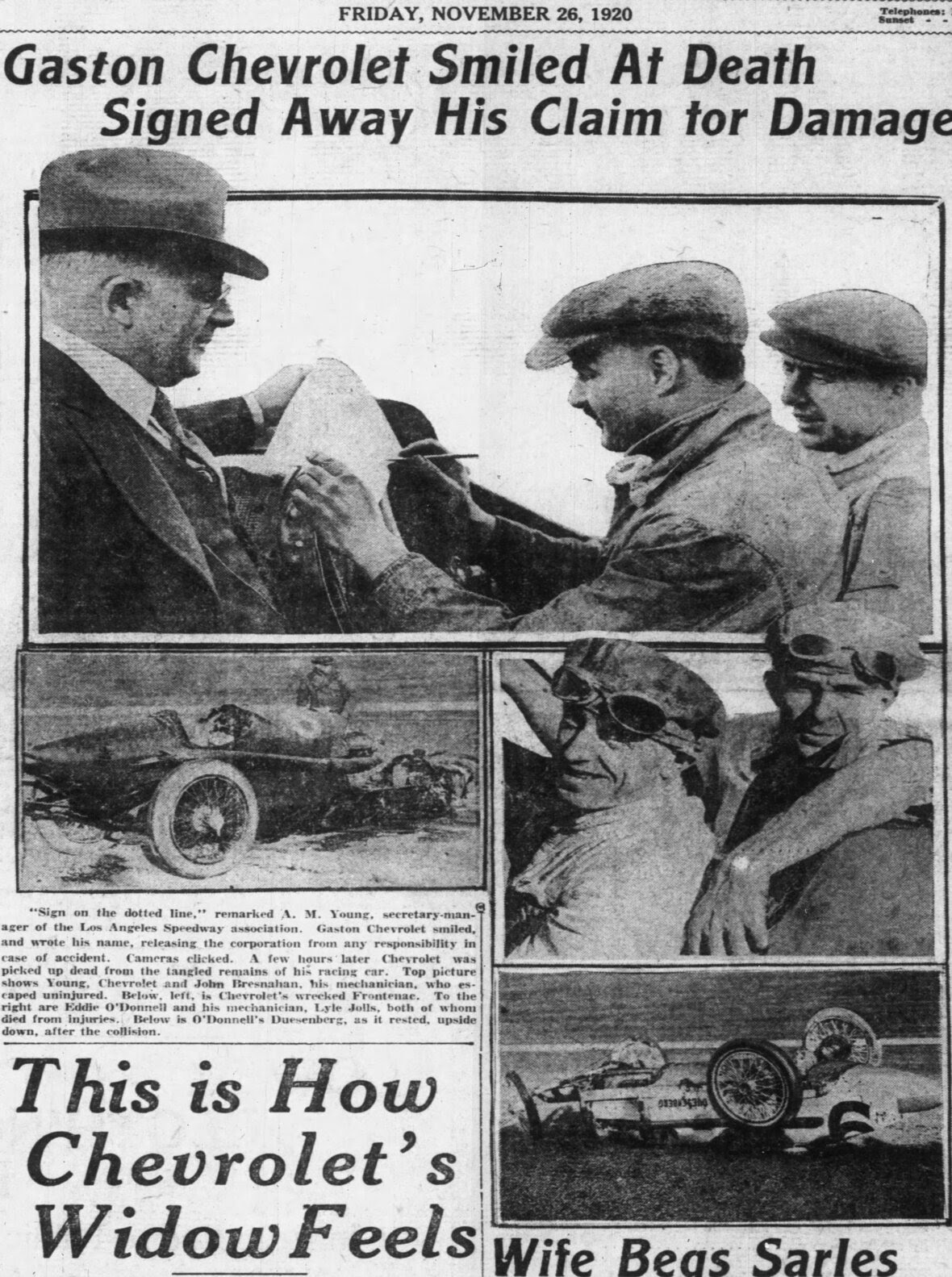
07 Sep Ancestor Newsletter- September 7, 2024

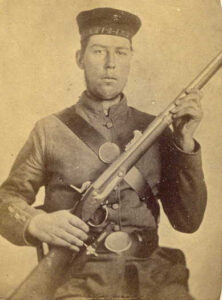
Contents
- 1 ANCESTOR- MY 3X GREAT GRANDPA WILLIAM I. NEVIUS HAD 4 SONS WHO FOUGHT IN THE CIVIL WAR; TWO CAME HOME
- 2 WHAT ABOUT ANOTHER ANCESTOR, HENRY’S DAUGHTER EMMA NEVIUS MORGAN
- 3 OLD CARS ONLY GET FIFTEEN SECONDS OF FAME
- 4 MY DUTCH MINISTER ANCESTOR ENCOUNTERS THE TROPICS, PORTUGUESE CONQUERORS, SPANISH PIRATES, AND FRENCH MAN-O-WARS BEFORE ENDING UP IN NEW AMSTERDAM
- 5 FATHER AND SON ‘S 1642 RESIDENCE STILL SURVIVES
- 6 GENEALOGY AND ANCESTORS ONLY HAVE ONE “O”
- 7 WHAT ABOUT YOUR DESCENDANTS KNOWING ABOUT YOUR ANCESTORS?
 ANCESTOR- MY 3X GREAT GRANDPA WILLIAM I. NEVIUS HAD 4 SONS WHO FOUGHT IN THE CIVIL WAR; TWO CAME HOME
ANCESTOR- MY 3X GREAT GRANDPA WILLIAM I. NEVIUS HAD 4 SONS WHO FOUGHT IN THE CIVIL WAR; TWO CAME HOME
1) John Rowland (1838-1914) served in Company D, 83rd Illinois Infantry without incident. He is pictured above with his brother Henry Wilbur in their uniforms.
2) William Dill (1840-1862) served in Company E, 9th Illinois Infantry, and was killed on April 6, 1862, at Pittsburg Landing, Tennessee, during the Battle of Shiloh. He is pictured above in his uniform.
_” The 9th was at Shiloh, Tennessee, on April 6, 1862, when the Confederate Army of the Mississippi struck at dawn. Some Union regiments fled in panic as Major General U.S. Grant ordered his division commanders to hold at all costs.
_Sent to reinforce the Union left, the 9th was told, “There is going to be plenty of fighting today; there must be no cowards! South of the Peach Orchard, the regiment was ordered to a tree-choked ravine and found themselves in a race with Confederates for the same natural barrier. The 9th got there first…Confederate commander Albert Sidney Johnston remarked on the Illinois regiment’s stubborn stand as the Arkansas and 29th Tennessee joined the fight.
Finally, renewed attacks collapsed the 12th and 15th Illinois on the 9th’s flanks, and with their dead and wounded thick on the ground, the regiment had to withdraw. The 9th suffered 103 killed and 258 wounded on Shiloh’s first day, one of the highest totals of the entire Civil War. Their 90-minute stand helped save Grant’s left and prepared the way for the great Union counterattack the next day.” The Confederate commander, General Albert Sidney Johnston, fell mortally wounded while personally leading a charge against this position.
_Pvt. William D. Nevius’ body was not identified after the battle, yet he is listed in Regimental Records as having been killed at the Battle of Shiloh. The Union dead were removed to the Shiloh National Cemetery at Pittsburg Landing, where many unidentified Federal graves can be found.
3) Henry Wilbur (1843-1927) served with Company I, 30th Illinois Infantry. He was captured and held for several months at Libby Confederate Prison in Richmond. He brought a thimble home that he found there. He married Elizabeth Morgan on November 27, 1866. After Elizabeth’s death on February 16, 1879, he married the widow Augusta Post Malden on July 4, 1880, in Bates Co., Missouri. They moved to Santa Monica, CA, and there he died on June 16, 1927, at the National Military Home in Malibu, Los Angeles, California, and is buried in the Candor Cemetery in Aledo. Augusta died on March 9, 1936.
4) David Montgomery (1843-1865) served with Company D, 83rd Illinois Infantry. He was court-martialed in May/June 1864. On January 19, 1865, he was released from military prison, where he had been sentenced to six months of hard labor. On March 7, 1865, he accidentally drowned while crossing the Cumberland River at Clarksville, Tennessee, while returning home from the war. His belongings include a blouse (shirt), a pair of cotton drawers, two flannel shirts, a pair of socks, two blankets, and a rubber poncho. They were released to his legal heir, his brother John Rowland Nevius.
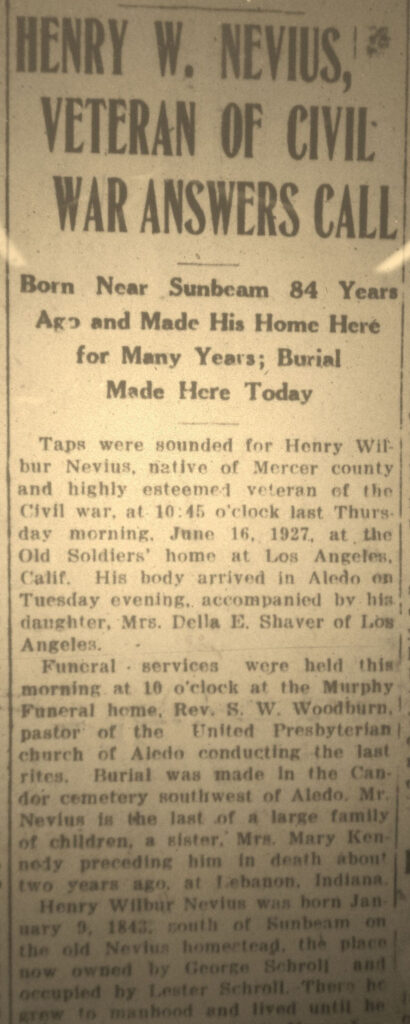
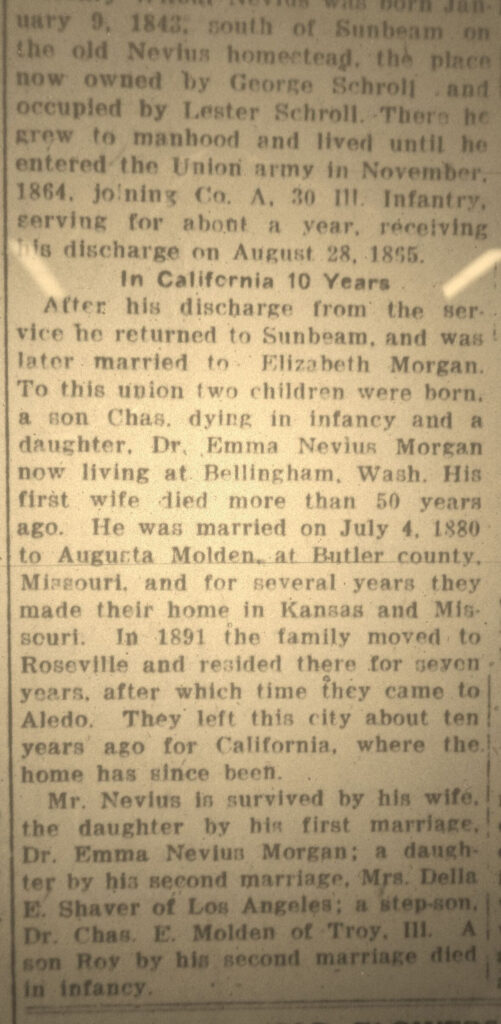
 WHAT ABOUT ANOTHER ANCESTOR, HENRY’S DAUGHTER EMMA NEVIUS MORGAN
WHAT ABOUT ANOTHER ANCESTOR, HENRY’S DAUGHTER EMMA NEVIUS MORGAN
Since female doctors were uncommon in the early 1900s, I thought I would see what I could find out about her. She graduated from the University of Illinois, where her specialty was ear, nose, and throat (ENT). She practiced in Fort Wayne, IN; Chicago, IL; Rock Island, IL; Davenport, IA; Bellingham, WA; and San Diego, CA. I came across a 1932 article mentioning the Los Angeles Olympics.
She used her mother’s maiden name as her last name and never married.
 OLD CARS ONLY GET FIFTEEN SECONDS OF FAME
OLD CARS ONLY GET FIFTEEN SECONDS OF FAME
We recently enjoyed seeing many classic cars from our youth in “Fly Me to the Moon.” I even discovered during our visits that there was a “Nelson-Le Moon” truck (pictured above). I wondered if one of my ancestors was involved in building the vehicle. In an encounter with another classic car admirer, we discussed that when buying a classic car, the least expensive part of the deal is the car (sort of like buying a horse).
It turned out that he was in the movie business, and he shared some wisdom from his business as follows:
“Something I learned in show business is how hard it is to keep classic cars operating for any length of time in scenes from movies and TV sets in the past. Generally, you don’t want to count on a car moving more than fifteen seconds and then parking or driving itself out of the picture. Now, I think about that whenever I see a show set in the past that requires old cars.”
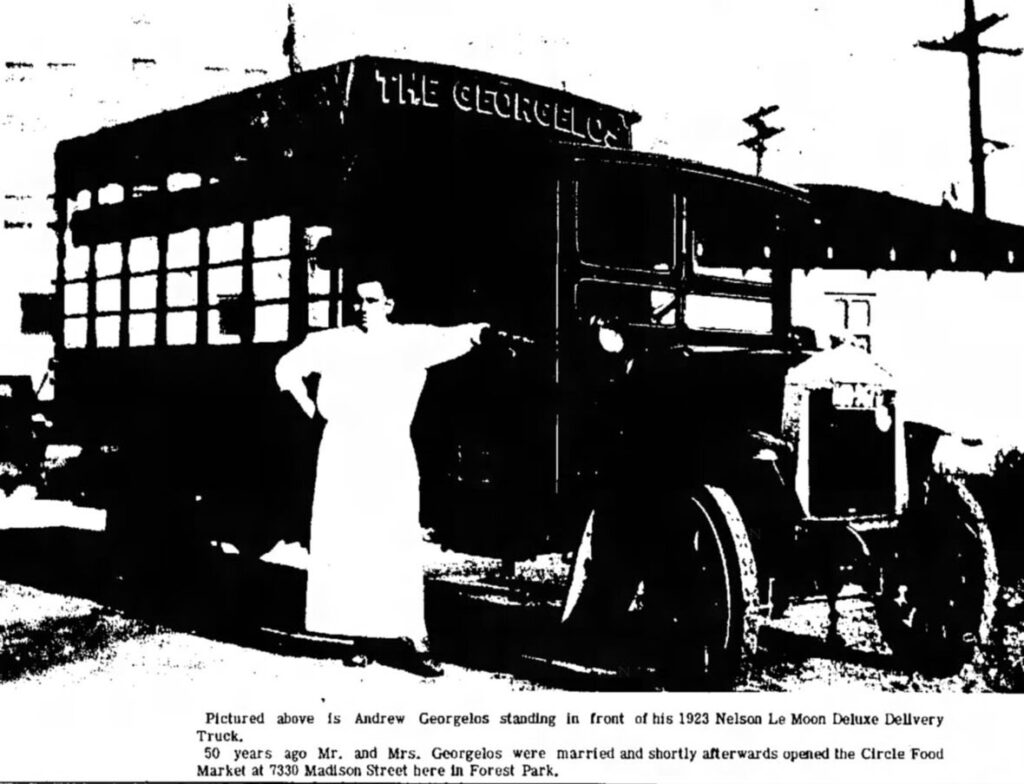
 MY DUTCH MINISTER ANCESTOR ENCOUNTERS THE TROPICS, PORTUGUESE CONQUERORS, SPANISH PIRATES, AND FRENCH MAN-O-WARS BEFORE ENDING UP IN NEW AMSTERDAM
MY DUTCH MINISTER ANCESTOR ENCOUNTERS THE TROPICS, PORTUGUESE CONQUERORS, SPANISH PIRATES, AND FRENCH MAN-O-WARS BEFORE ENDING UP IN NEW AMSTERDAM
My 9th Great Grandfather, Johann Theodorus Polhemus, was born in 1598 near Wolfstein, Bavaria, and was a Protestant minister who trained at Heidelberg University and ministered as a young man in or near his native town.
The Spanish (Catholics) besieged and then held the Bavarian Palatinate (Protestant Calvinists), where Johann’s family lived during the 1620s. A woodcut of the era shows Protestants being hanged in their shirts and underpants by Catholics priests, with their uniforms, boots, and hats heaped on the ground.
Rev. Polhemus, now a widower, returned briefly to minister in Bavaria before accepting an assignment by the Dutch West Indies Company to minister to Recife or Itamaracá, on the easternmost cape of equatorial Brazil. He was 37 when he moved to South America in January 1635 as minister to the sugar planters, traders, and Dutch military forts there.
The Dutch West Indies Company (WIC) set up company towns in Brazil, New Netherlands (New York/New Jersey), and the Caribbean. These were settlements primarily for farming, development, and trade for profit, and the company owned the territories. The governors were administrators of the WIC’s business, and the pastors, like Polhemus, were meant to minister to the WIC’s employees. Polhemus wasn’t “called” by a congregation but sent by the company that employed him.
In 1643, the 45-year-old Johann Polhemus married 19-year-old Catherina Van Werven, a Dutch woman living in Recife, Brazil. (Her father was Johann’s age.)
Johann preached in Dutch, French, and Portuguese in Brazil; he also knew German, Latin, and probably other languages.
In December 1653, the Dutch lost Itamaracá, and the following month, they surrendered Recife to Portuguese domination. In January 1654, they’d been given three months to convert to Catholicism and become Portuguese citizens—or leave. Mevrouw (Mrs/Mme) Catherina Polhemus and their children sailed for the safety of Amsterdam to collect Johann’s overdue wages from the Dutch West Indies Company.
Reports from Amsterdam said, “She is a very worthy matron, has a great desire to be [with] her husband, and has struggled along here in poverty and great straits, always conducting herself modestly and piously.” I suppose the reference to poverty means she was unsuccessful in collecting wages from the WIC.
At the same time, Johann Polhemus sailed on a Dutch trader bound for New Netherland (New York) to minister to the Dutch people on Long Island. However, as the ship sailed up the coast of Brazil or along the Caribbean windward islands, a Spanish privateer (a pirate with licensed wartime powers from his government) took the Dutch ship, its sugar cargo, crew, passengers, and freight captive to the Cape Verde Islands off Mauritania in Africa.
It’s unknown how long Rev. Polhemus was held for ransom or when he was released. Still, when he resumed his journey, the ship that carried him and 23 Portuguese/ Brazilian Jews was again pirated by a French man-o-war, the “St. Charles”, which arrived at New Amsterdam in September 1654, four to five months after the refugees departed from Brazil. In a September 1654 lawsuit, the French captain sued the Jewish refugees for their “passage” on his ship, but Dominie [Master] Polhemus and other Dutch passengers had already paid their ransom.
“The Dutch dominie [Johann Polhemus or a colleague] complained to the authorities in Holland, asking them not to permit any more Jews to come to the New Netherlands as there was plenty of trouble already with the Quakers, Mennonites, and Catholics. Governor Stuyvesant was told by the Dutch West India Company to leave religious issues alone and to permit the Jewish emigrants to trade in furs in any part of his province, provided they looked after their own people.”
Director-General Pieter Stuyvesant, an employee of the Dutch West Indies Company, ordered the Flatbush (Brooklyn) church to be built so the residents wouldn’t have to travel to Manhattan for religious services, and the structure was finished by about 1658. From Johann’s letters, it looks like the Dutch WIC loaned the congregation the construction funds, but they paid it back in church tithes and taxes before 1663.
The church was 60 or 65 feet long, 28 feet broad, 12 to 14 feet under the beams, and built as a cross. The minister’s dwelling was at the rear of the church. The Flatlands and Brooklyn Dutch Reform churches were organized and built a few years later and were also Polhemus’ congregations.
Apparently, clergy and missionaries, both ancient and modern, entered their professions or answered the gospel commission for the promise of eternal reward—not to get rich in this life! Johann couldn’t afford to bring Catherina and their children to America for two years. They arrived in September 1656.
When Johann was 72 years old and still preaching part-time, Stuyvesant ordered: “forebear ye taxing or levying any sum upon any part of ye Estate of Domine Paulinus [Polhemus] your Minister until further order.” His ministry was still a valuable service to the churches. He died at age 78 in the summer of 1676, when a fellow pastor wrote to the Classis, “The death of Domine Johannes Theodorus Polhemus, the aged minister in the churches of Breukelen, Midwout and New Amersfoort, all on Long Island, gives us occasion to trouble you again” for more pastors to be sent. During Polhemus ‘ tenure, the congregation had grown to more than 300 members (not counting attendees).
Catherina Van Werven Polhemus lived until 1702. Johann and Catherina were buried in the churchyard at Flatbush, 890 Flatbush Avenue, Brooklyn, New York. The site holds the record for the longest continual use by its congregation and is now listed as a New York City landmark. In Brooklyn and Queens, several streets are named Polhemus in honor of Rev. Johann Polhemus.
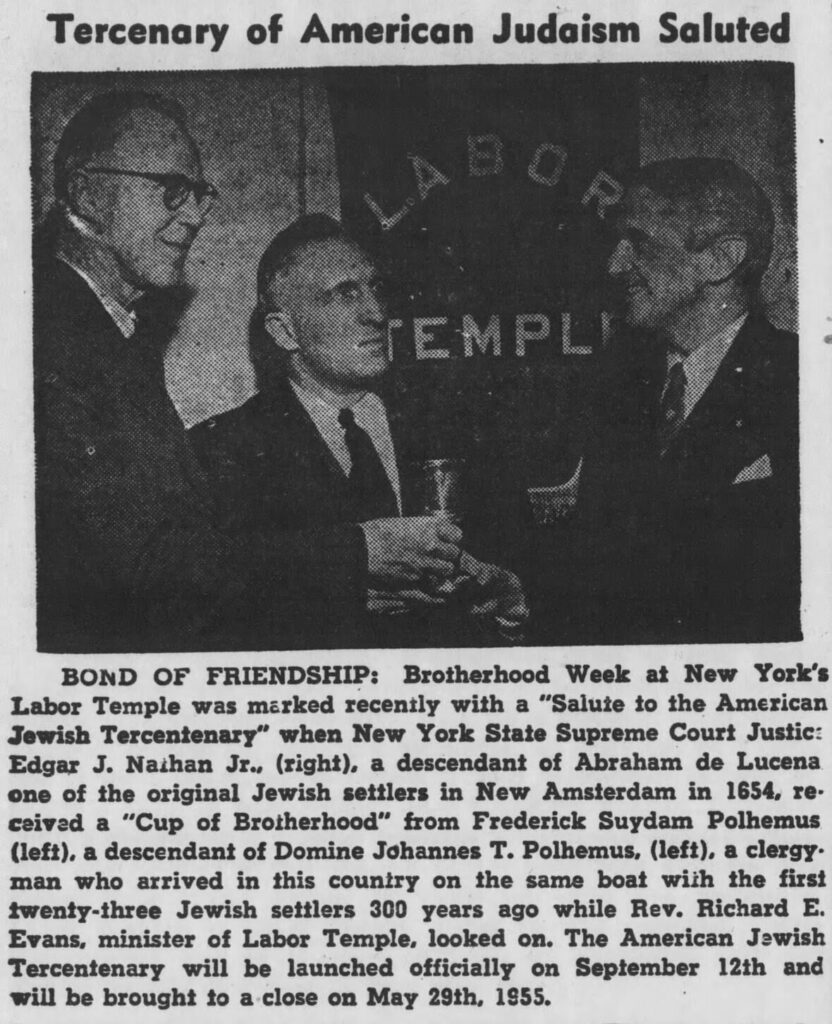
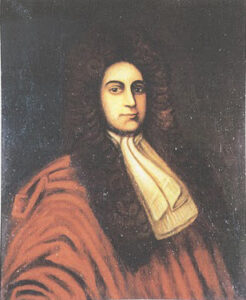

 FATHER AND SON ‘S 1642 RESIDENCE STILL SURVIVES
FATHER AND SON ‘S 1642 RESIDENCE STILL SURVIVES
Warner Hall is a historic plantation in Gloucester County, Virginia, United States. Augustine Warner (above left; the portrait is referenced in the 1885 newspaper article below), progenitor of many prominent First Families of Virginia (and ancestors of some of our clients) and great-great-grandfather of President George Washington, established the plantation in 1642 after receiving a royal land grant and would serve in the House of Burgesses, as would many later owners.
While Augustine Warner Jr. (above right) operated the plantation and served as Speaker of the House of Burgesses, rebels associated with Bacon’s Rebellion sacked and looted it and made it their headquarters after they sacked Jamestown. Warner sought compensation for goods valued at £845 or the equivalent of what 40 slaves or servants would produce in a year. This led to litigation with fellow burgess William Byrd, William Byrd whom Warner blamed for supporting Bacon but who portrayed himself as a fellow victim.
Warner Jr. had no male heirs, although his daughter Mildred would become the grandmother of George Washington. His daughter Elizabeth married John Lewis, who assumed the house and surrounding plantation and served in the House of Burgesses, as did their descendants until circa 1820.
The house burned in 1840, and the two surviving (and used) outbuildings were joined circa 1900 to become a Colonial Revival mansion. It is currently operated as a country inn. The cemetery on the property, which includes graves of the Warner and Lewis families, has been maintained by the Association for Preservation of Virginia Antiquities since 1903. The plantation was listed on the National Register of Historic Places in 1980.
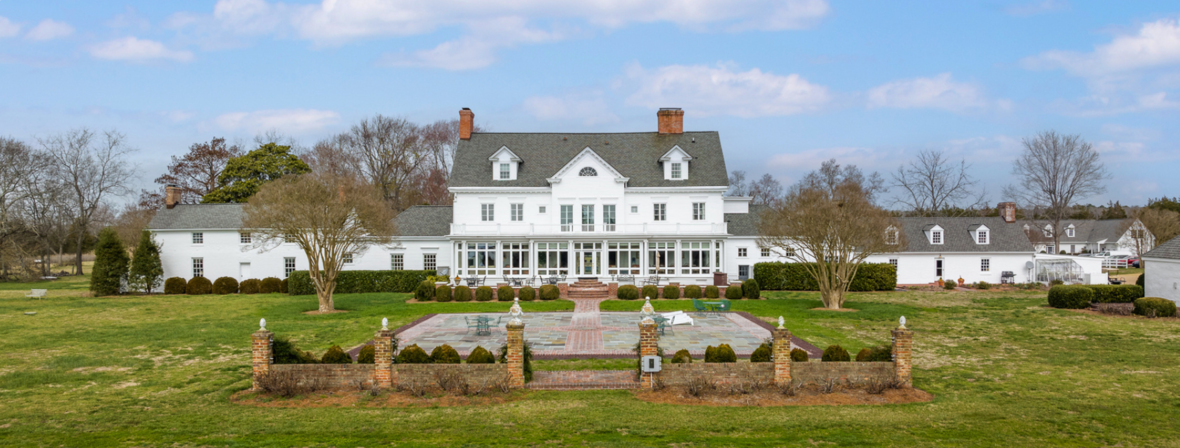
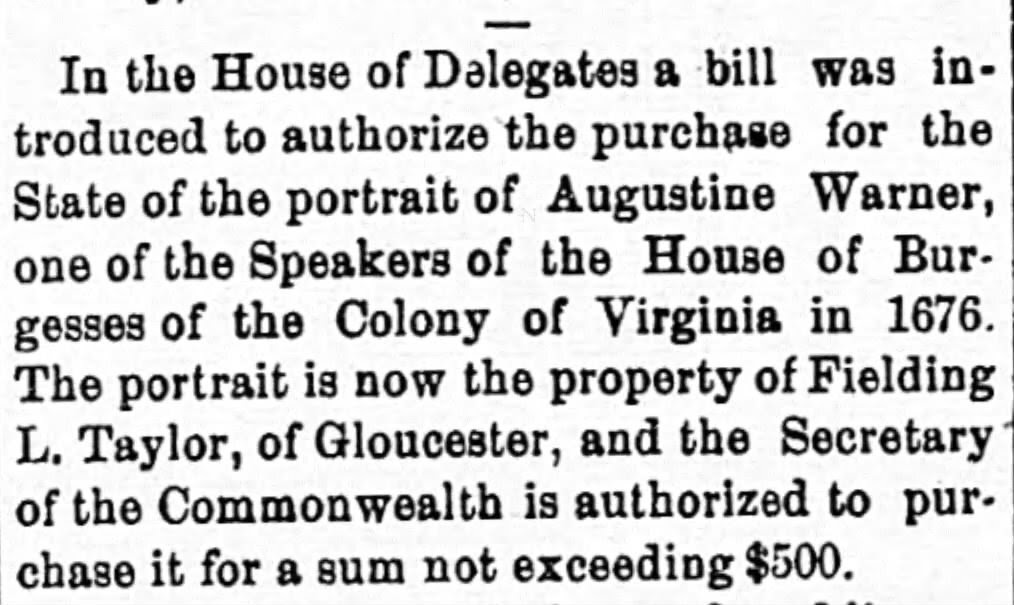
 GENEALOGY AND ANCESTORS ONLY HAVE ONE “O”
GENEALOGY AND ANCESTORS ONLY HAVE ONE “O”
With the word “Genealogy” being part of my business name, I have to spell the word a lot to people. Some people try to put the “o” in place of the “e” or the “a”, or after the “e” or the “a”, to give it two “o’s”. I have jokingly told people that only geologists and gynecologists get two “o’s”, as they have more schooling than genealogists.
When I read this article Barbie movie “may have spurred interest in gynecology,” study finds | Ars Technica, the paragraph below made me think about the fact that geologists and gynecologists probably also have to correct the spelling of their professions
Genealogy only ended up being part of our name because when I started the business, my wife suggested the Dancestors name. However, the web domains Dancestors (Japanese cartoon characters, and Dancestry (the history of our dancing ancestors), were already taken. So, I settled on Dan-cestors, which created problems with government and banking forms that don’t allow dashes.
However, the bigger problem became when a couple of social media sites banned us because the last seven combined letters of Dancestors were not a “community-approved” word. Apparently, the dash made it a standalone word.
So that is when we became Dancestors Genealogy. That got us through that problem. However, one platform returned later and said even the word Dancestors was not a “community-approved” word. I appealed the decision, which isn’t a process where you provide information to have them consider it; they informed me six months later that my appeal was denied. So, I am unclear how people post anything about their ancestors on that platform. I have had no luck finding the list of “community-unapproved” words, but it does sound like a memorable George Carlin skit.
Mort(e) ancestor is an English legal term you can see in the reference below. Several references to dancer Ginger Rogers’ descendants refer to her as a “dancestor.”
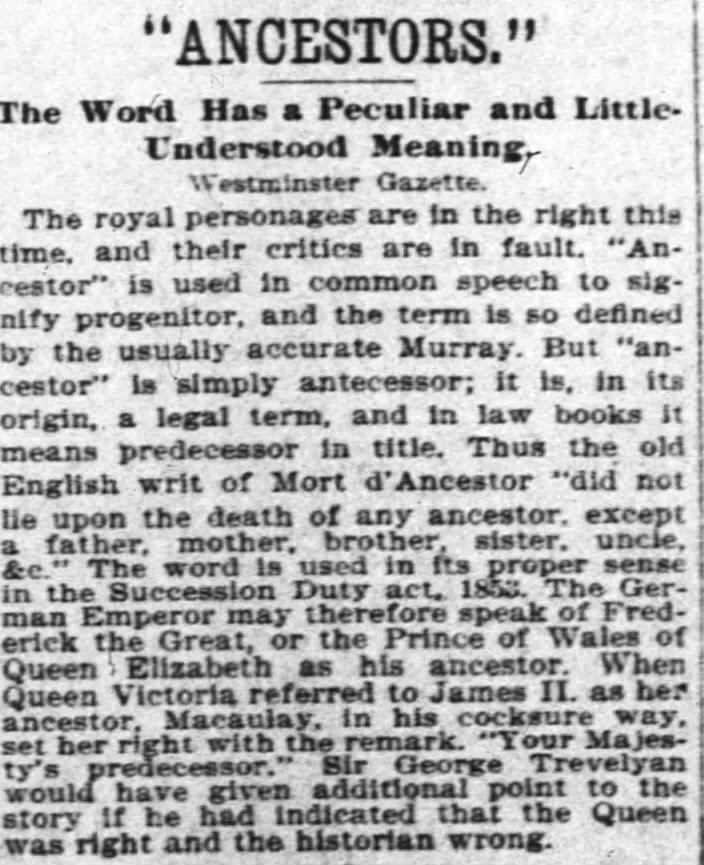
 WHAT ABOUT YOUR DESCENDANTS KNOWING ABOUT YOUR ANCESTORS?
WHAT ABOUT YOUR DESCENDANTS KNOWING ABOUT YOUR ANCESTORS?
Reach out to Dancestors Genealogy. Our genealogists will research, discover, and preserve your family history. No one is getting any younger, and stories disappear from memory every year and eventually from our potential ability to find them.
Preserve your legacy, and the heritage of your ancestors.
Paper gets thrown in the trash; books survive!
So please do not hesitate and call me @ 214-914-3598 and get your project started!
Visit our website to learn more!


 ANCESTOR- MY 3X GREAT GRANDPA WILLIAM I. NEVIUS HAD 4 SONS WHO FOUGHT IN THE CIVIL WAR; TWO CAME HOME
ANCESTOR- MY 3X GREAT GRANDPA WILLIAM I. NEVIUS HAD 4 SONS WHO FOUGHT IN THE CIVIL WAR; TWO CAME HOME WHAT ABOUT ANOTHER ANCESTOR, HENRY’S DAUGHTER EMMA NEVIUS MORGAN
WHAT ABOUT ANOTHER ANCESTOR, HENRY’S DAUGHTER EMMA NEVIUS MORGAN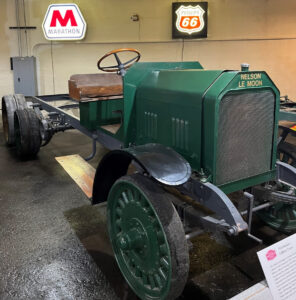 OLD CARS ONLY GET FIFTEEN SECONDS OF FAME
OLD CARS ONLY GET FIFTEEN SECONDS OF FAME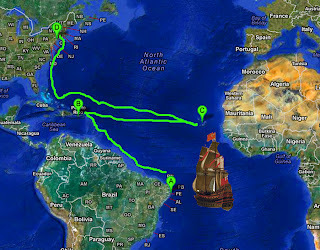 MY DUTCH MINISTER ANCESTOR ENCOUNTERS THE TROPICS, PORTUGUESE CONQUERORS, SPANISH PIRATES, AND FRENCH MAN-O-WARS BEFORE ENDING UP IN NEW AMSTERDAM
MY DUTCH MINISTER ANCESTOR ENCOUNTERS THE TROPICS, PORTUGUESE CONQUERORS, SPANISH PIRATES, AND FRENCH MAN-O-WARS BEFORE ENDING UP IN NEW AMSTERDAM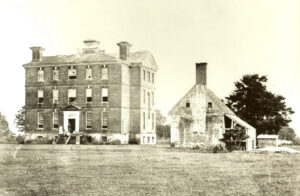 FATHER AND SON ‘S 1642 RESIDENCE STILL SURVIVES
FATHER AND SON ‘S 1642 RESIDENCE STILL SURVIVES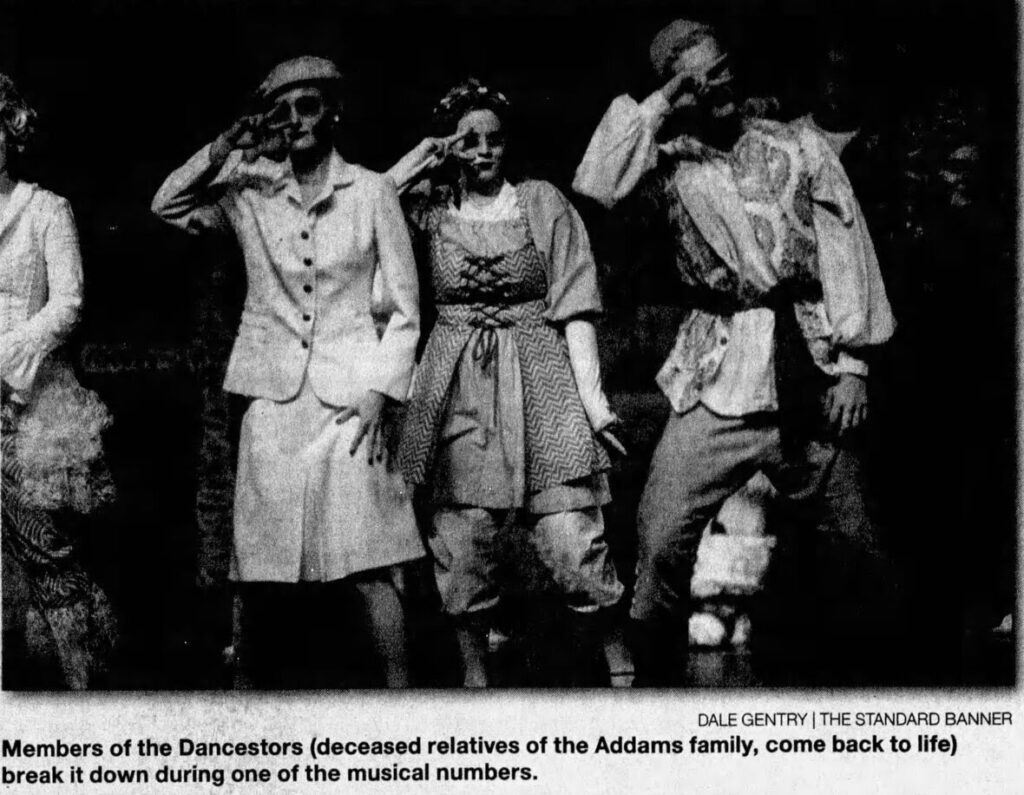 GENEALOGY AND ANCESTORS ONLY HAVE ONE “O”
GENEALOGY AND ANCESTORS ONLY HAVE ONE “O”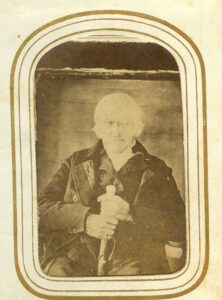 WHAT ABOUT YOUR DESCENDANTS KNOWING ABOUT YOUR ANCESTORS?
WHAT ABOUT YOUR DESCENDANTS KNOWING ABOUT YOUR ANCESTORS?